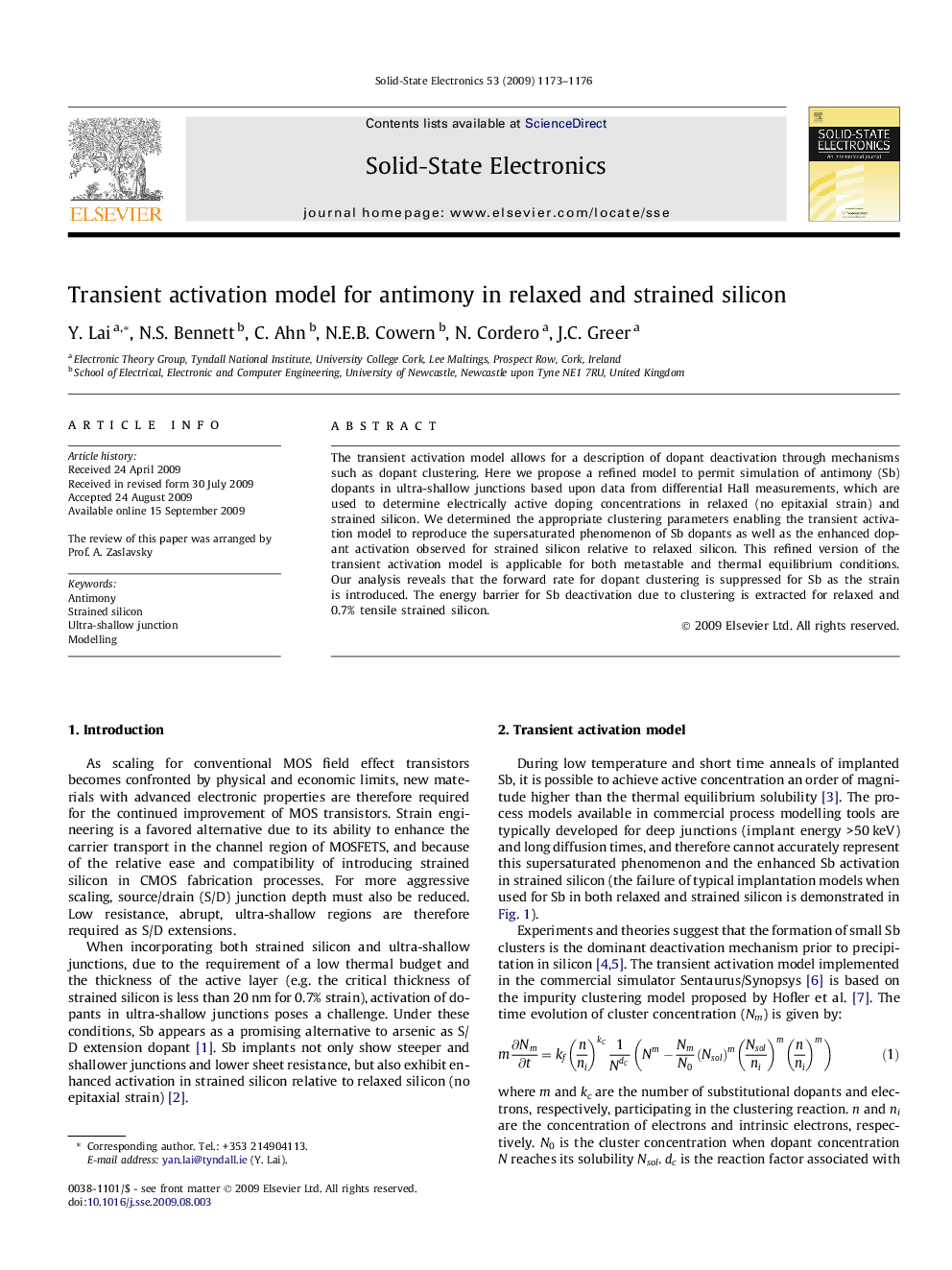| Article ID | Journal | Published Year | Pages | File Type |
|---|---|---|---|---|
| 748069 | Solid-State Electronics | 2009 | 4 Pages |
The transient activation model allows for a description of dopant deactivation through mechanisms such as dopant clustering. Here we propose a refined model to permit simulation of antimony (Sb) dopants in ultra-shallow junctions based upon data from differential Hall measurements, which are used to determine electrically active doping concentrations in relaxed (no epitaxial strain) and strained silicon. We determined the appropriate clustering parameters enabling the transient activation model to reproduce the supersaturated phenomenon of Sb dopants as well as the enhanced dopant activation observed for strained silicon relative to relaxed silicon. This refined version of the transient activation model is applicable for both metastable and thermal equilibrium conditions. Our analysis reveals that the forward rate for dopant clustering is suppressed for Sb as the strain is introduced. The energy barrier for Sb deactivation due to clustering is extracted for relaxed and 0.7% tensile strained silicon.
